
Revista Brasileira de Geomorfologia
Scope & Guideline
Advancing Knowledge in Geomorphological Transformations
Introduction
Aims and Scopes
- Geomorphological Mapping and Analysis:
The journal frequently publishes studies that involve detailed geomorphological mapping, utilizing advanced techniques such as GIS and remote sensing to analyze landforms and their characteristics. - Environmental Dynamics and Geomorphology:
Research often explores the relationship between geomorphological features and environmental factors, including hydrology, climate change, and human activities, highlighting how these interactions shape landscapes. - Coastal and Fluvial Geomorphology:
A significant focus is on coastal and riverine environments, investigating processes such as erosion, sediment transport, and the morphological evolution of these dynamic systems. - Application of Geomorphological Research to Management and Planning:
The journal emphasizes the application of geomorphological studies to land use planning, environmental management, and disaster risk reduction, reflecting the practical implications of geomorphological research. - Interdisciplinary Approaches:
Research often incorporates interdisciplinary methods, combining geomorphology with geology, ecology, and hydrology to provide a holistic understanding of landscape processes.
Trending and Emerging
- Digital and Remote Sensing Techniques:
The integration of digital elevation models, remote sensing, and GIS technologies is on the rise, reflecting a trend towards more precise and innovative methods for analyzing geomorphological processes. - Impact of Climate Change on Geomorphology:
There is an increasing focus on how climate change influences geomorphological processes, particularly in coastal and fluvial environments, highlighting the relevance of geomorphology in addressing environmental issues. - Anthropogenic Effects on Landscapes:
Research examining the impact of human activities on geomorphological processes, including urbanization and land-use changes, is gaining traction, emphasizing the need for sustainable management practices. - Geodiversity and Geomorphological Heritage:
Emerging interest in geodiversity and the preservation of geomorphological heritage reflects a growing awareness of the cultural and ecological value of landforms, contributing to conservation efforts. - Cross-Disciplinary Collaboration:
There is a notable trend towards collaborative research that merges geomorphology with other disciplines such as ecology, hydrology, and urban planning, fostering comprehensive studies that address complex environmental challenges.
Declining or Waning
- Traditional Erosional Studies:
There appears to be a reduction in studies focused solely on traditional erosional processes without integrating modern techniques or interdisciplinary approaches, indicating a shift towards more complex analyses. - Historical Geomorphology:
Research that primarily addresses historical geomorphological changes without connecting to current environmental issues or contemporary methods has become less prominent. - Local Scale Studies:
There has been a noticeable decline in studies that focus exclusively on local scale geomorphological features, as the journal increasingly favors broader regional or global analyses that provide comparative insights.
Similar Journals
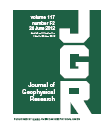
JOURNAL OF GEOPHYSICAL RESEARCH-EARTH SURFACE
Connecting Disciplines to Decode Earth’s Surface.JOURNAL OF GEOPHYSICAL RESEARCH-EARTH SURFACE, published by the American Geophysical Union, stands as a leading voice in the fields of Earth-Surface Processes and Geophysics. With an impressive impact factor placing it in the Q1 category for both disciplines, this journal offers invaluable insights and research findings that address critical challenges related to Earth's surface dynamics and processes. Since its inception in 2004, the journal has been dedicated to fostering a deeper understanding and interdisciplinary exploration of topics critical to environmental science, geology, and geophysics. Researchers and professionals in the field will find cutting-edge studies meticulously peer-reviewed to ensure high quality and relevance, making it an essential resource for academics, practitioners, and students alike. The journal's significant Scopus rankings — 25th out of 179 in Earth-Surface Processes and 26th out of 165 in Geophysics — underscore its influence and the rigor of its content, encouraging submission and engagement from leading scholars globally.
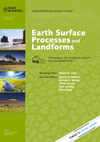
EARTH SURFACE PROCESSES AND LANDFORMS
Pioneering Research in Geomorphology and HydrologyEARTH SURFACE PROCESSES AND LANDFORMS is a renowned academic journal dedicated to the comprehensive exploration of dynamic processes shaping the Earth's surface. Published by Wiley, this esteemed journal has established itself as a leading platform in the fields of Earth and Planetary Sciences, Geography, Planning, and Development. With an impressive Impact Factor and ranked in the Q1 category for multiple disciplines, it consistently features cutting-edge research that contributes to the understanding of geomorphology, hydrology, and related environmental phenomena. Researchers and professionals can benefit from the journal's extensive repository of high-quality studies, making it a crucial resource for advancing knowledge in these vital areas. As it continues to converge from 1981 to 2024, EARTH SURFACE PROCESSES AND LANDFORMS remains pivotal for scholars aiming to engage in high-level discourse and discovery in Earth sciences.

Boletin de Ciencias de la Tierra
Championing Open Access to Earth Science ResearchBoletin de Ciencias de la Tierra is a distinguished open-access journal dedicated to the field of Earth and Planetary Sciences, published by the Universidad Nacional de Colombia, Sede Medellín. Since its transition to open access in 2006, it has become an essential platform for disseminating high-quality research that addresses critical geological and environmental issues pertinent to Latin America and beyond. With an ISSN of 0120-3630 and an E-ISSN of 2357-3740, the journal aims to promote scientific dialogue and share innovative findings in various areas including geology, geochemistry, and environmental sciences. Although it currently holds a Scopus rank of #184 in the General Earth and Planetary Sciences category, indicating a percentile of only 5, Boletin de Ciencias de la Tierra is committed to fostering a rich academic discourse and enhancing the visibility of scholarly works. Situated in Medellín, Colombia, the journal serves as a vital resource for researchers, professionals, and students looking to explore advancements and participate in the global conversation on Earth sciences.

Earth Surface Dynamics
Connecting Science and Discovery in Earth DynamicsEarth Surface Dynamics, published by COPERNICUS GESELLSCHAFT MBH, is a pioneering open-access journal dedicated to the study of geophysical processes and Earth-surface dynamics. Since its inception in 2013, this journal has established itself as a vital platform for disseminating high-quality research in the fields of Earth-Surface Processes and Geophysics, earning a prestigious Q1 ranking in both categories as of 2023. With an impressive Scopus ranking of #33 out of 179 for Earth-Surface Processes and #31 out of 165 for Geophysics, it captures the attention of leading researchers and professionals in the Earth sciences community. The journal is committed to providing a forum for innovative and interdisciplinary research that enhances our understanding of terrestrial environments and their dynamics, making it an essential resource for students, academics, and industry professionals alike. Please visit our journal to explore groundbreaking research and contribute to the ongoing dialogue in the dynamic field of Earth science.
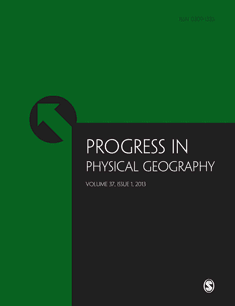
Progress in Physical Geography-Earth and Environment
Elevating discourse in Geography and Environmental Studies.Progress in Physical Geography-Earth and Environment is a premier academic journal published by SAGE Publications Ltd, renowned for its contributions to the fields of Earth and Planetary Sciences and Geography. With a distinguished history spanning from 1977 to 2024, this journal maintains a robust Q1 classification in both Earth and Planetary Sciences and Geography, Planning and Development, reflecting its high impact and rigorous scholarly standards. As evidenced by its Scopus rankings, it stands at the forefront of research, positioned in the 89th percentile among leading journals. Progress in Physical Geography aims to facilitate the exchange of innovative research, insights, and methodologies, making it an essential resource for researchers, professionals, and students dedicated to understanding and shaping the natural environment. While currently not designated as an Open Access journal, the wide accessibility of its content, combined with its significant impact factor, underscores its importance within the academic community seeking to advance knowledge and application in geography and environmental sciences.

Morphology
Exploring the Intricacies of Language MorphologyMorphology is a leading academic journal published by Springer, dedicated to the field of linguistics and language, with an impressive 2023 Category Quartile of Q1 reflecting its high impact and quality. Established in 2006, this international journal presents cutting-edge research and advancements in morphological studies, providing a vital platform for scholars and practitioners to disseminate their findings and insights. With its Scopus rank placing it in the top 10% of journals in the Arts and Humanities (Language and Linguistics), Morphology plays a pivotal role in shaping the discourse within the field. The journal maintains a commitment to excellence and rigor, catering to a wide readership that includes researchers, professionals, and graduate students eager to explore the complexities of language structure. Although currently not open access, Morphology ensures that its content is accessible through various institutional subscriptions, facilitating widespread engagement with important linguistic research.

Quaestiones Geographicae
Bridging Disciplines for a Deeper Understanding of GeographyQuaestiones Geographicae, an esteemed open-access journal published by SCIENDO, serves as a vital platform for scholarly communication in the field of Earth and Planetary Sciences. Since its inception in 1979, the journal has been dedicated to promoting rigorous research and discourse in geography, encompassing a breadth of topics that reflect the dynamic nature of the discipline. With an impressive Impact Factor belonging to the Q3 quartile category, the journal actively contributes to the global scientific community's understanding of geographical phenomena. Its commitment to open-access publishing since 2010 ensures that groundbreaking research is accessible to a wider audience, facilitating collaboration and innovation. As part of its enduring legacy, Quaestiones Geographicae engages researchers, professionals, and students alike, inviting them to explore, share, and expand the boundaries of geographical knowledge.

Turkiye Jeoloji Bulteni-Geological Bulletin of Turkey
Illuminating the path of geological discovery in Turkey and beyond.Turkiye Jeoloji Bulteni-Geological Bulletin of Turkey (ISSN: 1016-9164) is a prominent scholarly journal published by the TMMOB JEOLOJI MUHENDISLERI ODASI in Türkiye, dedicated to advancing the field of geology through high-quality research and dissemination of significant scientific findings. With an emphasis on geological studies pertinent to the region and its global implications, the journal serves as a crucial platform for researchers, professionals, and students aiming to share and explore innovative theories, methodologies, and case studies. Although the journal operates under a traditional access model, its rich content provides valuable insights into varied topics including but not limited to mineralogy, geophysics, petrology, and environmental geology. Furthermore, the journal's commitment to exhibiting originality and relevance ensures its vital role in shaping geological research, fostering collaboration among academics and practitioners alike.
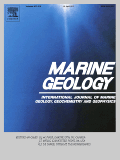
MARINE GEOLOGY
Highlighting Innovations in Marine Geological Science.MARINE GEOLOGY, published by Elsevier, is a premier journal dedicated to advancing the understanding of marine geological processes and their interactions with the Earth's systems. With an ISSN of 0025-3227 and an E-ISSN of 1872-6151, this esteemed journal has been a vital resource for researchers and professionals since its inception in 1964. The journal is recognized for its high impact, with commendable rankings, including Q1 in both Geology and Oceanography, and Q2 in Geochemistry and Petrology according to its 2023 category quartiles. With a Scopus rank within the top percentiles in various fields, MARINE GEOLOGY offers a platform for original research, critical reviews, and significant advancements in the field, covering topics ranging from sedimentology to geochemical processes in marine environments. Although it does not operate under an open-access model, its rigorous peer-review process ensures high-quality publications that contribute to our understanding of oceanic and geological sciences. Researchers, students, and professionals alike will find MARINE GEOLOGY to be an essential resource for collaboration and discovery within the vast field of marine science.
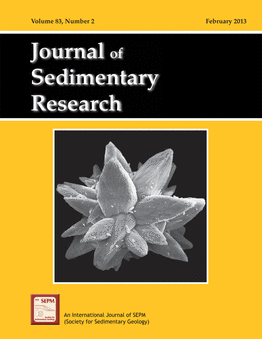
JOURNAL OF SEDIMENTARY RESEARCH
Connecting Scholars through Sedimentary DiscoveriesThe JOURNAL OF SEDIMENTARY RESEARCH, published by SEPM-SOCIETY FOR SEDIMENTARY GEOLOGY, stands as a pivotal peer-reviewed journal in the field of sedimentary geology. With an ISSN of 1527-1404 and an E-ISSN of 1938-3681, this esteemed journal features a broad scope, delving into the intricacies of sedimentary processes, lithology, and stratigraphy since its inception in 1931. Enjoying a distinguished reputation, it has achieved a Q1 category ranking in Geology for 2023 and ranks 87 out of 321 in Earth and Planetary Sciences, placing it in the 73rd percentile among its peers in Scopus. With continued access options available, it facilitates the dissemination and discussion of cutting-edge research that shapes the understanding of sedimentary phenomena. Researchers, professionals, and students alike benefit from this critical platform that fosters academic engagement and drives progress within the field.